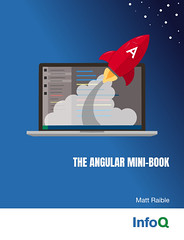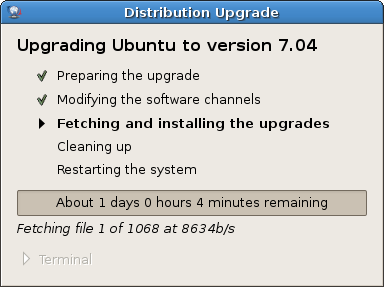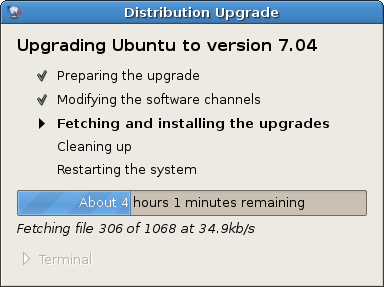Spring Web Flow and JSF
Keith Donald has a nice and long writeup on Spring Web Flow 1.0.3's stellar support for JSF:
One important area where our integration is growing is with the Java Server Faces (JSF) community. Beginning with Spring Web Flow 1.0.3, our JSF integration is on-par with what the Spring community expects, and delivers what JSF developers in the trenches need most. This blog will illustrate the integration enhancements to show you the difference Spring Web Flow is making for JSF developers.
One of the most interesting parts of the post is a few paragraphs down:
Basically, Web Flow solves every problem this pour soul experienced with JSF's basic navigation capabilities. As one of our leading users noted, Web Flow can be used as a complete replacement for JSF's default "forward-centric" navigation model.
It's also interesting to note that ideas from SWF could be incorporated into JSF 2.0:
I'd also like to take this opportunity to encourage those already using Spring Web Flow in a JSF environment to speak out about your experience?send me an email, leave a comment here, write an article on JSF central, tell leaders in the JSF community about your experience. Your real world experience can help influence the direction of the JSF 2.0 specification in a time where the specification lead has asked for community feedback. Interface21 has been extended an invitation from Ed Burns, the JSF specification lead, to be a part of the JSF 2.0 expert group, which is a recognition of Web Flow's contribution as an innovative JSF extension. We have accepted that invitation and are excited about helping channel whats proven to work in the area of navigation and state management on a general basis back into JSF 2.0, while continuing to chart new territory and remaining usable in any environment.
Are you using SWF with JSF? If so, have your experiences been good or bad? I'm sure Keith would love to hear about them either way.
I think it's interesting to note that both Interface21 and JBoss are doing a lot to build solutions to JSF's problems. Is there money to be made from supporting JSF? In reality, you have to like what both companies are doing: they're building solutions to overcome the shortcomings of JSF and they're contributing those solutions back to the community for free. Even cooler is the fact that both companies are trying to get their solutions into the next version of JSF. This benefits everyone as far as I'm concerned.
What about those of you using Spring Web Flow with Spring MVC or Struts? How is it working for you?
I recently integrated Spring Web Flow into my current project using the Spring Webflow Plugin. In the past, I've used SWF with Spring MVC and JSF, so the Struts 2 Plugin seemed a bit odd. I guess I'll know more once I start using it more.
This brings up a good question - do you think it's better to create a page flow (i.e. a shopping cart) without Spring Web Flow first, and then refactor? Or do you think it's easier to use SWF from the beginning? My gut feeling is to start w/o it because you may not need it. Then if you do need it, you'll understand the problems it solves. What are your thoughts?







